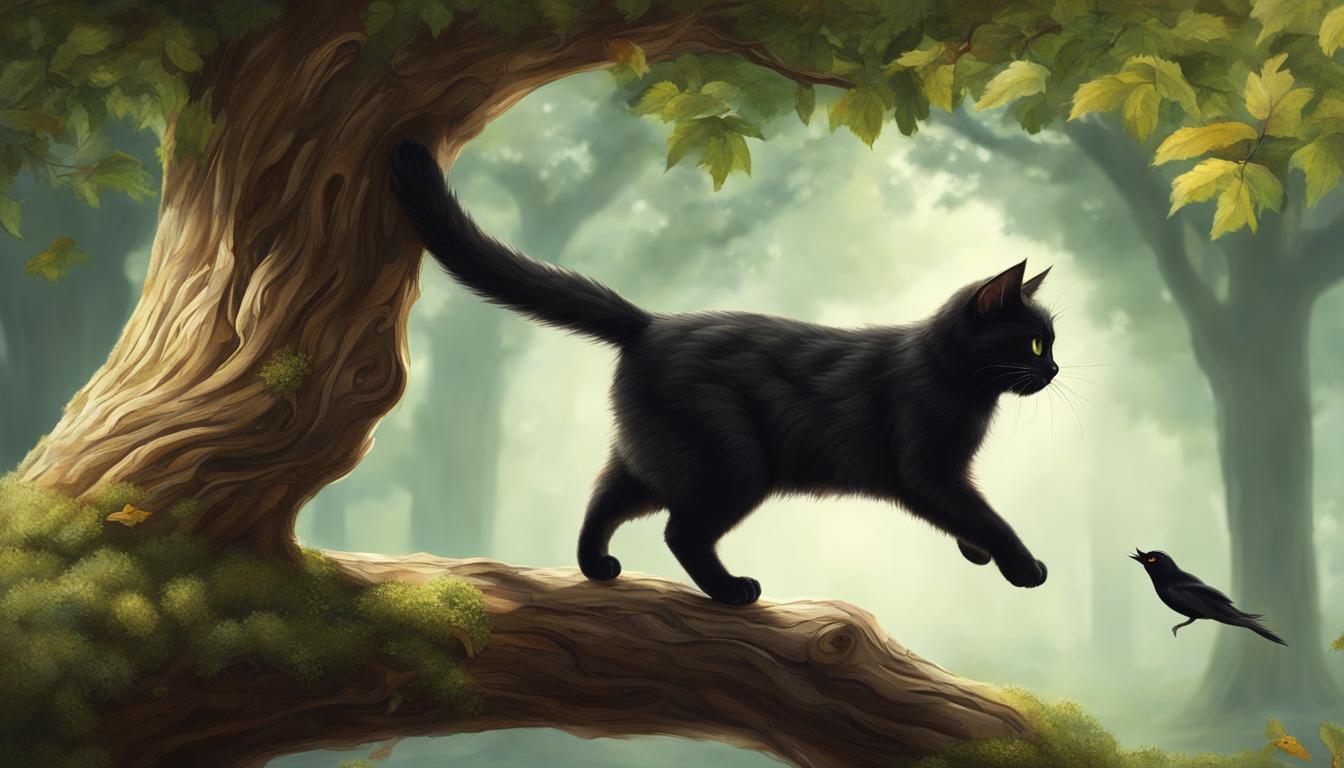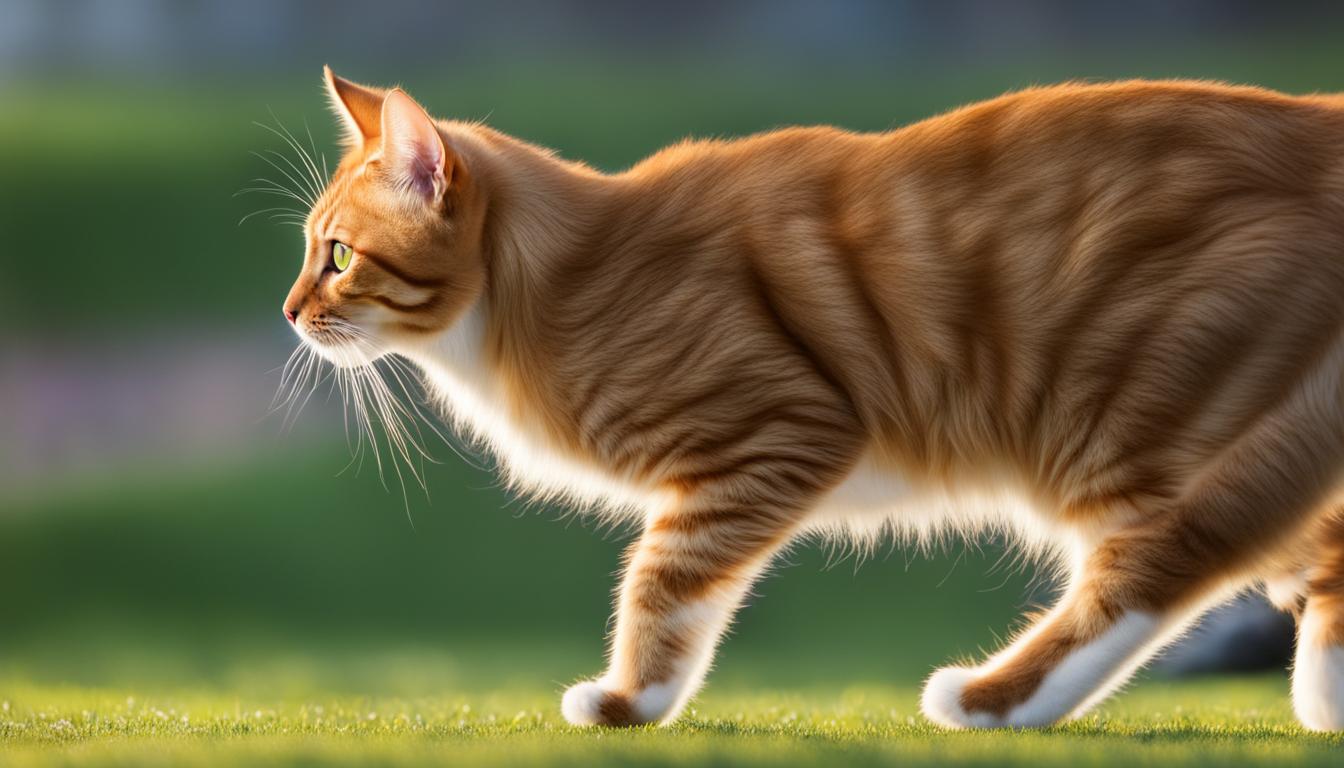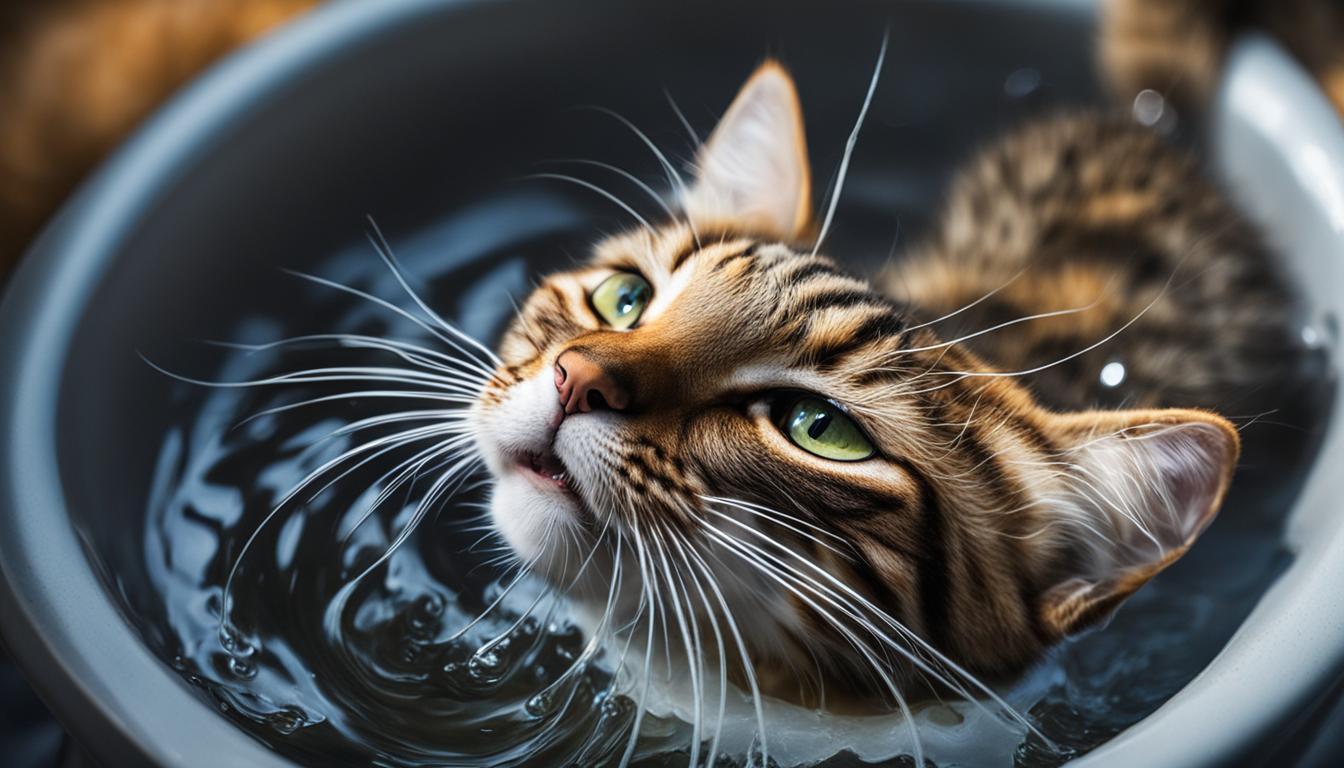Have you ever marveled at the graceful agility of a cat as it effortlessly climbs a tree? The way they navigate the branches with precision, maintaining their grip, balance, and power, is truly remarkable. As a cat owner, I’ve always been fascinated by this behavior and wanted to understand the physics behind it.
It turns out, cat tree climbing is not just a random act of curiosity. It is rooted in their instinctual need for safety, their desire to have a vantage point, and their dominance hierarchy within their territory. Cats are wired to climb trees as a means of survival and maintaining their territory.
One of the reasons cats can climb trees so effortlessly is their incredible sense of balance. They have a natural ability to distribute their weight evenly and adjust their body position to maintain stability. This, combined with their powerful muscles, allows them to scale great heights without losing their footing.
Another key factor in a cat’s tree climbing prowess is their incredible grip. Cats have retractable claws, which they can extend and dig into the tree’s surface, providing them with a secure hold. Their claws act as hooks, allowing them to propel themselves upwards and navigate even the thinnest branches with ease.
But perhaps the most fascinating aspect of cat tree climbing is their righting reflex. Cats have the remarkable ability to correct themselves in midair and land on their feet, thanks to their flexible spines and vestibular system. This reflex helps them survive falls from significant heights and adds to their overall agility.
Key Takeaways:
- Cat tree climbing is rooted in a cat’s instinctual need for safety and territorial dominance.
- Cats have exceptional balance, allowing them to maintain stability while climbing trees.
- The retractable claws of cats act as hooks, providing them with a secure grip on tree surfaces.
- Cats have a remarkable ability to correct themselves midair and land on their feet, known as the righting reflex.
- Understanding the physics of cat tree climbing can help ensure their safety and enjoyment of this natural behavior.
Techniques Cats Use to Climb Trees
When it comes to climbing trees, cats have a repertoire of impressive techniques that showcase their agility and natural abilities. Their flexible spines, strong muscles, and flexible joints allow them to navigate tree branches with ease. But it’s not just their physical attributes that enable their tree-climbing prowess; it’s also their instinctual behaviors inherited from their wild ancestors.
Cats rely on their stalking and pouncing instincts to navigate trees with precision. These behaviors honed over generations help them maintain balance and stability while climbing. Additionally, cats use their sharp claws as essential tools for gripping onto tree bark and other surfaces. Their claws provide additional stability and traction, allowing them to ascend and descend tree trunks effortlessly.
To better understand the techniques cats employ while climbing trees, it’s helpful to observe their movements. They often start by stretching their bodies vertically, using their forelimbs to reach higher branches. With a quick jump, they propel themselves upward, using their hind limbs to gain momentum. As they ascend, their claws dig into the tree’s surface, securing their grip and ensuring balance. The combination of their agility, muscle coordination, and use of claws makes tree climbing seem effortless for these feline acrobats.
Understanding the techniques cats use to climb trees not only allows us to appreciate their natural abilities but also enables us to ensure their safety. By providing appropriate structures such as cat trees or scratching posts, we can offer our feline companions opportunities to indulge in their climbing instincts while keeping them away from potential hazards and protecting our furniture. It’s fascinating to witness these agile creatures navigate their environment with such grace and precision.
Table: Comparison of Cat Climbing Techniques
| Technique | Description |
|---|---|
| Vertical Stretch | Cats stretch their bodies vertically to reach higher branches. |
| Quick Jump | Cats propel themselves upward with a powerful jump, using their hind limbs. |
| Claw Grip | Cats use their sharp claws to dig into the tree’s surface, maintaining stability and balance. |
| Forelimb Reach | Cats use their forelimbs to reach higher branches, extending their range of climbing. |
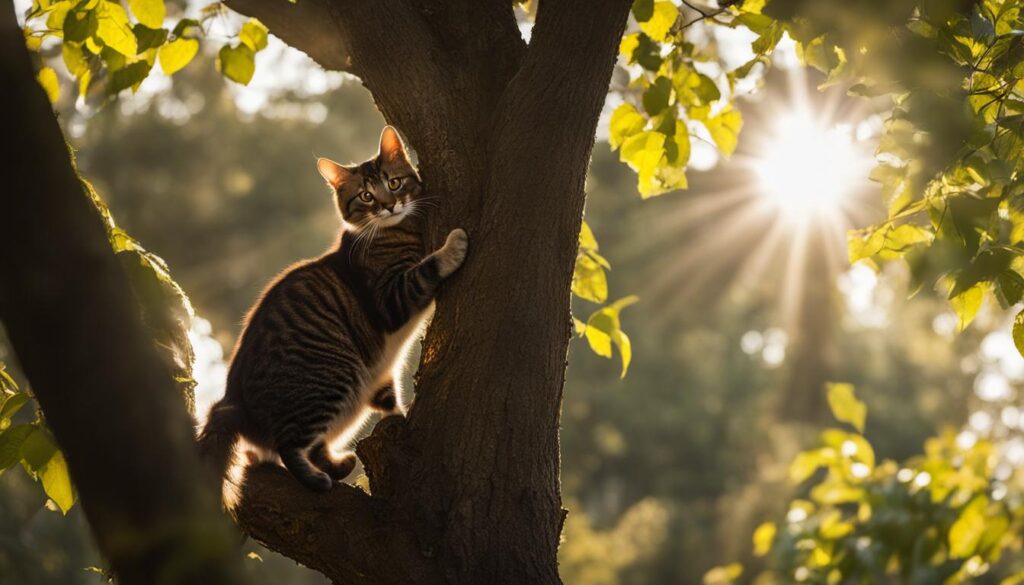
“Cats are incredible climbers, effortlessly navigating trees due to their remarkable agility and natural instincts. Their flexible spines, strong muscles, and sharp claws allow them to conquer even the tallest trees with ease.”
The Role of Claws in Tree Climbing
When it comes to climbing trees, cats have an undeniable advantage – their claws. These retractable and sharp tools play a crucial role in a cat’s ability to navigate and conquer the vertical challenges of tree climbing. Acting as hooks, a cat’s claws grip onto tree bark and provide the necessary stability to propel themselves upwards. The sharpness of their claws allows them to dig into the tree’s surface, ensuring a secure hold while maneuvering through branches.
But it’s not just the gripping ability of their claws that aids in tree climbing. Cats’ claws also contribute to their overall balance and agility. By extending or retracting their claws, cats have precise control over their grip, allowing them to adjust their balance while navigating through the complex network of branches. This ability to retract their claws when not in use prevents them from getting stuck or causing injury to themselves.
Claws: A Climbing Aid
Consider a cat’s claws as specialized climbing gear designed specifically for feline adventurers. They provide an essential advantage, allowing cats to ascend and descend trees with ease and grace. Their claws give them the ability to explore their environment from a higher vantage point, ensuring their safety and satisfying their curious nature.
| Advantages of Claws in Tree Climbing | Disadvantages of Claws in Tree Climbing |
|---|---|
|
|
It’s important to note that cats’ claws should be handled with care and respect. Proper maintenance, such as regular trimming, is essential to prevent overgrowth and potential issues. Additionally, providing cats with appropriate scratching surfaces, such as scratching posts, helps keep their claws healthy and prevents them from seeking alternative options, like tree trunks or furniture.
Overall, cats’ claws are not just sharp weapons of defense; they are also essential tools that enable these agile felines to conquer the heights of tree climbing. With their claws as their allies, cats possess the skills and dexterity necessary to navigate trees effortlessly and satisfy their natural instincts.
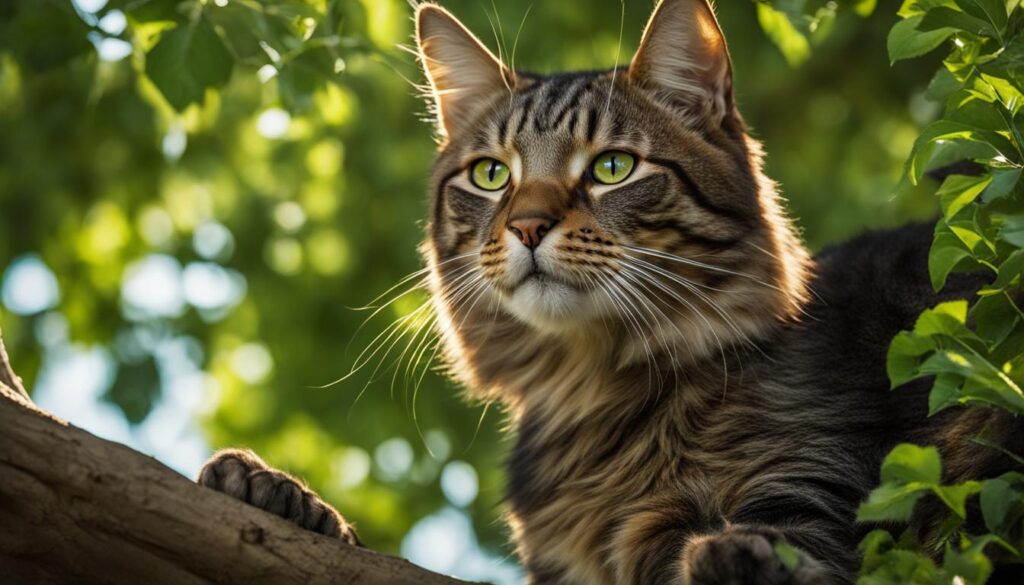
Factors Affecting a Cat’s Climbing Ability
When it comes to a cat’s climbing ability, several factors come into play. Weight is one such factor that can significantly impact how easily a cat can navigate tree branches. A lighter cat may have an easier time climbing compared to a heavier cat, as they can maneuver their body with more agility and less strain. On the other hand, a heavier cat may struggle to maintain balance and find it more challenging to climb to higher heights.
Dexterity is another crucial factor that affects a cat’s climbing success. Cats with more agile and flexible bodies can navigate trees with greater ease. Their ability to twist and turn their bodies allows them to make swift and precise movements while climbing. Additionally, cats with better dexterity can quickly adjust their posture and grip, enabling them to climb more confidently and securely.
The type of landing surface also plays a role in a cat’s climbing ability. A soft grassy surface provides a better cushion and reduces the risk of injury if a cat falls from a tree. On the other hand, a hard concrete surface poses a higher risk of injury. Cats instinctively assess the potential landing surface before climbing, considering the potential risks and adjusting their behavior accordingly.
Factors Affecting a Cat’s Climbing Ability
“A lighter cat may have an easier time climbing compared to a heavier cat, as they can maneuver their body with more agility and less strain.”
In summary, a cat’s weight, dexterity, and the type of landing surface are all factors that can affect their climbing ability. While lighter cats with better dexterity may have an advantage in climbing trees, each cat is unique, and their abilities can vary. It is essential for cat owners to understand and appreciate their cat’s individual characteristics and provide a safe environment that allows them to enjoy their natural climbing behavior.
| Factors | Impact on Climbing Ability |
|---|---|
| Weight | A lighter cat has an easier time climbing due to increased agility. |
| Dexterity | Cats with better dexterity can navigate trees more effectively. |
| Landing Surface | A soft surface reduces the risk of injury compared to a hard surface. |
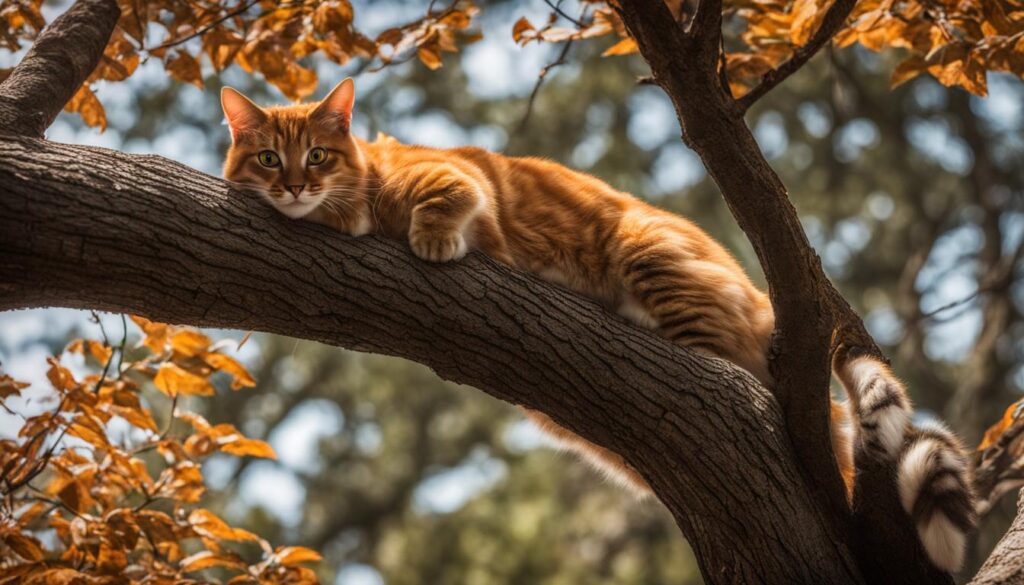
Conclusion
As I wrap up this exploration into the physics of cat tree climbing, I am left in awe of our feline friends’ remarkable abilities. Their natural agility and balance lend themselves perfectly to scaling heights that would make most of us dizzy. The combination of their instinctual need for safety, desire for vantage points, and their territorial dominance drives them to conquer the tallest trees with ease.
One cannot overlook the pivotal role that claws play in a cat’s climbing prowess. Like tiny hooks, their sharp claws dig into tree bark, providing stability and supporting their upward momentum. The retractable nature of their claws gives cats the control they need to navigate tree branches with precision.
While cats possess an incredible righting reflex that allows them to survive falls from great heights, it is important for us as responsible cat owners to prioritize their safety. We must not intentionally put our feline companions at risk by tempting fate with daredevil feats. Instead, let us ensure their well-being by understanding their natural behaviors, providing appropriate cat trees or scratching posts, and securing them in a safe environment.
The world of cat tree climbing is a fascinating one, where feline agility and instinct collide. By appreciating the physics behind their climbing abilities and taking the necessary safety precautions, we can ensure that our beloved furry companions can enjoy their innate talents while staying safe and sound. So, let’s encourage our cats to reach new heights, but always with their safety in mind.
FAQ
How do cats climb trees?
Cats have flexible spines, strong muscles, and flexible joints that allow them to maneuver their bodies with ease. Their stalking and pouncing instincts, inherited from their wild ancestors, help them navigate trees with precision. Cats can also use their claws to grip onto tree bark and other surfaces, providing additional stability and traction.
What role do claws play in cat tree climbing?
Claws act as hooks that can grip onto tree bark and help the cat propel itself upwards. The sharpness of their claws allows them to dig into the tree’s surface and provide stability while climbing. Cats can retract their claws when not in use, preventing them from getting stuck or causing injury. The ability to extend and retract their claws gives cats precise control over their grip and balance while navigating tree branches.
What factors can affect a cat’s climbing ability?
Several factors can affect a cat’s climbing ability, including its weight, body size, and dexterity. A lighter cat may have an easier time climbing compared to a heavier cat. Cats with more agile and flexible bodies can navigate trees more effectively. The type of landing surface, such as concrete or soft grass, can also affect the cat’s safety and likelihood of injury.
Can all cats climb trees?
While most cats have the physical abilities to climb trees, not all cats may choose to do so. Some cats may not feel the need to explore heights or may prefer alternative ways to satisfy their curiosity. It ultimately depends on the individual cat’s personality and preferences.
Is it safe for cats to climb trees?
Climbing trees is a natural behavior for cats, but safety should always be a priority. Cats have a righting reflex that allows them to correct themselves midair and land on their feet if they fall. However, intentionally subjecting cats to high falls can be dangerous and should be avoided. It is important to ensure the safety of your cat by providing appropriate climbing structures and supervising them in outdoor environments.

